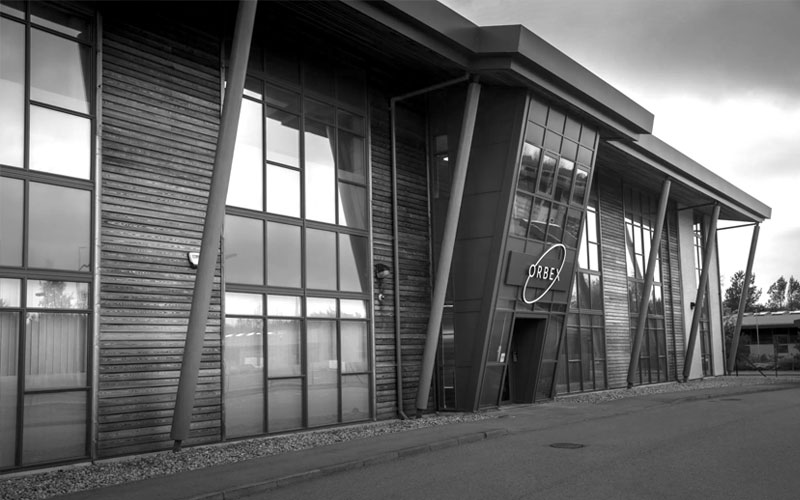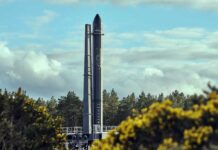
Orbex announced on 18 April that it had secured £16.7 million in additional funding to complete the construction of Sutherland Spaceport and launch the maiden flight of its 19-metre two-stage Prime rocket. The company has now raised around £102 million since its founding in 2015.
The £16.7 million in additional funding secured by Orbex was contributed by existing investors, including the Scottish National Investment Bank, Octopus Ventures, BGF, and Heartcore. According to a 16 April Companies House filing, the company utilized a pair of convertible loan note instruments to secure the funding. A convertible loan note is a type of debt instrument that provides the lender the option to convert the outstanding loan balance into equity (which usually takes the form of shares of the borrower’s company) under specified conditions, such as during a future funding round.
Orbex closed a £40.4 Million Series C funding round in October 2022. On the back of that, the company has begun construction of its own launch facility in Scotland, continued preparing for the maiden flight of Prime, and grown its team to 170 people. Additionally, the company is looking ahead to Prime entering service and the company’s ability to ramp up production once it completes a maiden flight. This appears to have accounted for much of the company’s war chest, requiring it to look for additional funding to bridge the gap before closing a Series D funding round.
“We’ve got a rocket factory to build. We’ve got 170 people on the payroll. So, you know, the capex (capital expenditure) is ramping significantly as we get close to the maiden flight,” explained Orbex CEO Phillip Chambers during an interview with European Spaceflight.
Chambers was appointed as CEO of Orbex in January, taking over from interim CEO Martin Coates. With the appointment, Chambers became the company’s fourth CEO in less than twelve months. Co-founder and CEO Chris Larmour abruptly stepped down from his post in April 2023, leaving Kristian von Bengtson in charge. Martin Coates was appointed as interim CEO in May 2023 before being succeeded by Chambers.
“Changing leadership is a distraction from the core business,” explained Chambers of the leadership changes. “But at the end of the day, if it’s the right thing to do for the business, then you’ve got to do it and get it done as quickly as you can and then and then move on, and we’ve done that.”
While £16.7 million in new funding will be used to bridge the gap between funding rounds, it also represents the company’s first tranche of Series D funding, as explained by Chambers.
“It’s part of the Series D because it’s a convertible loan that would convert into the series round. It’s a way to get started on the Series D early by taking money from existing investors.”
According to an Orbex press release, the company’s Series D will “secure its long-term prospects as the leading orbital launch business in Europe.” The press release did, however, not indicate when the company is likely to close its Series D funding round.
Is there a future for Orbex and microlaunchers in general?
When asked about the viability of small launch offerings, the Orbex chief explained that in order to make the economics work, a high launch cadence was necessary. According to Chambers, the company is planning to meet that challenge with “ambitious launch cadence targets.”
While Sutherland will be Prime’s home base, the company has already begun exploring other facilities to ensure it will have the capabilities to meet its targets. The Orbex CEO even floated the idea of the company building out its own equatorial spaceport instead of utilizing the potentially very busy commercial launch site being developed by CNES at the Guiana Space Centre.
Although the company envisions a future where small launch vehicles are economically viable, it is also exploring the possibility of building a larger launch vehicle to give it better odds.
“If you want to compete on cost per kilogram, the laws of physics dictate that you’ve got to build a bigger rocket. I think that when you have developed all of the technology and the infrastructure, the test sites, and you have the team to build the microlauncher, you have many of the things you need to build a bigger rocket. You’ve also seen what’s going on with the ESA European Launcher Challenge. We’re certainly evaluating what we should do there. I think it would be fantastic if we had a bigger vehicle built out of the UK.”
According to Chambers, work on the spaceport in Sutherland will be wrapped up by the end of 2024. Although he would not share when the first launch of Prime might occur, it seems unlikely that an attempt will be made this year.




